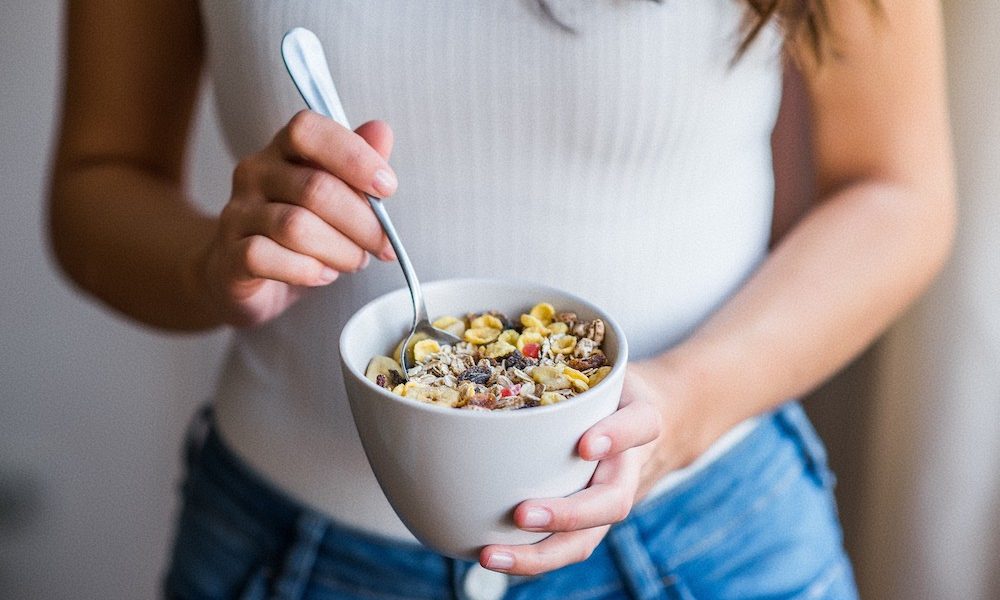From hormones to their weight, women have a lot to navigate around what they should and shouldn’t eat. Let’s break down the science for a few of the most common myths.
BY: RACHAEL HARTLEY, RD, LD, CDE
Nutrition myths are all around us. From the media to co-workers, you’re constantly hearing about the latest diet fad or having to navigate a sensationalist headline to make sense of what you’re allowed to eat.
And with the diet industry being especially predatory towards women, let’s set the record straight for a few of the most common nutrition myths in women’s health.
MYTH #1: SOY IS BAD FOR HORMONAL HEALTH.
There are many different iterations and contradictions around this myth – that soy causes breast cancer, it’s bad for women around menopause, and it’s bad for the thyroid. At the same time, tofu is often promoted as a plant-based superfood. Right up there with the confusion around eggs and cholesterol, there are few foods that are more divisive.
So why all the confusion? Back in the early 2000s, the FDA approved a health claim for soy products stating that soy can help prevent heart disease, only to revoke the claim a few years ago – not because soy was found out to be unhealthy, but because the claim was approved on inadequate evidence, and probably shouldn’t have been approved in the first place.
Fear of soy stems from its isoflavone content, a compound that has a similar chemical structure to estrogen. Because isoflavones have a similar chemical structure to estrogen, they also attach to estrogen-receptors in our body (although it doesn’t have as strong of an effect), and in some ways, can even have an anti-estrogen effect. Since some cancers, including certain types of breast cancer, grow when exposed to estrogen, this was an important focal point in research.
There was a minor media panic in the late 90s when one small study in 24 women linked soy to an increased risk of breast cancer. However, over the years, the bulk of research shows that there is either no effect on cancer risk, or a slightly reduced risk of breast cancer, including this 2006 meta-analysis which showed eating soy following a breast cancer diagnosis was linked with reduced mortality. Furthermore, soy isoflavones may also be slightly beneficial for treating symptoms of menopause.
Bottom line, it’s more important to look at research on food or nutrients in the context of dietary patterns, and soy is a great example of this. Not only is soy a tasty (if you cook it right!) and versatile plant-based protein, but it can also play a major role in dietary patterns that are lower in animal protein which lowers the risk of many chronic diseases, including certain types of cancer, diabetes and heart disease.
MYTH #2: WEIGHT GAIN CAUSES MENOPAUSAL SYMPTOMS.
Look at any 20-year-old body next to an 80-year-old body, and it’s clear our bodies are supposed to change. For whatever reason, women are expected to hold on to their 20-year old body as long as physically possible despite the reality of biology as they age, with menopause being one of them.
While some studies have attempted to show a correlative link between weight gain and menopausal symptoms, the only established causal link to symptoms is from the depletion of estrogen itself, not weight gain.
Menopause occurs when women’s ovaries reach the end of their reproductive period and stop releasing eggs each month. With that, there is a drop in estrogen and progesterone, two hormones produced by the ovaries. As your ovaries stop producing estrogen, weight gain is a biological response in an attempt to help regulate the hormone by increasing adipose tissue (fat tissue).
The drop in these hormones also disrupts a woman’s reproductive health, leading to symptoms such as hot flashes, insomnia, mood swings, fatigue, low libido, urinary tract issues, vaginal dryness, and fatigue. Estrogen depletion is also linked to cardiovascular issues and lower bone mineral density.
MYTH #3: WOMEN NEED A LOT LESS CALORIES THAN MEN.
Women are often sold the idea that men need much more food than women. Generally speaking, men do need more energy (calories) than women – they tend to be taller and have a higher ratio of muscle to fat mass, which is more metabolically active tissue. But that doesn’t account for our individual needs.
The way calories are often talked about makes it sound like every middle-aged woman needs to eat the exact same amount, but energy needs vary quite significantly based on:
- Body size
- Physical activity level
- The ratio of lean to fat body mass
- Dieting history
- Genetics
This doesn’t even begin to account for day-to-day fluctuations in metabolism based on changes in sleep, menstruation, and stress, just to name a few. For example, the Recommended Daily Allowance (which is just an estimation of energy needs) of a physically active female requires the same amount of food as a sedentary male of the same age.
Remember, everyone’s energy needs are constantly changing, and trying to assess our needs compared to another person is attempting to nail down a moving target. The idea that women should eat less than men is a gendered expectation that’s not rooted in the reality of our own unique nutrition needs. It has much more to do with beliefs about femininity than what our body actually needs.
Adapted from the original post.
Rachael Hartley, RD, LD, CDE is a private practice dietitian, food enthusiast, and nutrition expert based in Columbia, SC. By guiding others to rediscover the joy of nourishment rather than deprivation, Rachael helps men and women alike improve their health and well-being through delicious whole food recipes and practical advice through intuitive eating.

